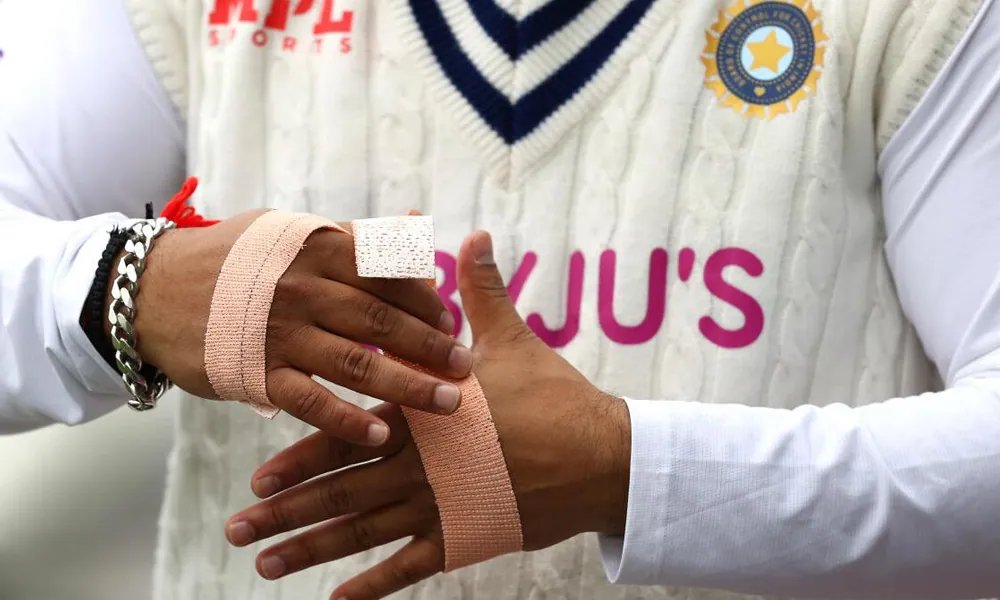The Essential Guardian: The Role of Thumb Protection in Cricket Batting Gloves

In the fast-paced and high-intensity world of cricket, every part of a player's gear serves a crucial purpose. Among the most critical components are cricket batting gloves, which provide protection, grip, and comfort to batsmen facing down fierce bowlers. While all areas of the hand are important, special attention must be paid to the thumb, a particularly vulnerable part of the hand due to its exposure to impact during batting. In this blog, we'll explore the indispensable role of thumb protection in cricket batting gloves and why it's essential for batsmen to have this vital guardian on their side.
Understanding the Vulnerability: The Thumb's Crucial Role
The thumb plays a pivotal role in gripping and controlling the bat, making it an indispensable asset for batsmen. However, this very prominence also exposes the thumb to a higher risk of injury during batting. When facing fast-paced deliveries, the thumb is often the first point of contact with the ball, making it susceptible to impact and potential injury.
Minimizing Risk: The Importance of Thumb Protection
Thumb protection in cricket batting gloves serves two primary functions: cushioning against impact and stabilizing the thumb to prevent hyperextension or injury. The padding and reinforcement around the thumb area absorb shock and distribute pressure, reducing the risk of bruising, fractures, or dislocations caused by the impact of the ball.
Additionally, thumb protection helps stabilize the thumb joint, reducing the risk of hyperextension or sprains when executing shots. By providing support and structure to the thumb, batting gloves help maintain proper alignment and prevent excessive movement that could lead to injury.
Innovative Designs: Advancements in Thumb Protection
Over the years, cricket batting glove manufacturers have continuously innovated to enhance thumb protection and performance on the field. Advanced materials such as high-density foams, gel inserts, and impact-resistant plastics are strategically incorporated into glove designs to provide maximum protection without compromising flexibility or comfort.
Some gloves feature reinforced thumb sections with additional padding or extra layers of protection to safeguard against impact from fast deliveries. Others utilize ergonomic designs and anatomical shaping to provide a snug and supportive fit around the thumb, reducing the risk of injury from hyperextension or twisting.
Balancing Protection and Mobility: The Thumb's Freedom of Movement
While thumb protection is essential, it's equally important to ensure that batting gloves allow for natural movement and flexibility of the thumb. Batsmen rely on the dexterity and mobility of their thumbs to grip the bat and execute shots with precision and control. Therefore, batting gloves must strike the right balance between protection and mobility, providing adequate support without restricting movement.
Modern cricket batting gloves achieve this balance through innovative construction techniques and materials that offer both protection and flexibility. Ventilation panels, moisture-wicking fabrics, and anatomically designed thumb sections ensure that batsmen can move their thumbs freely while still benefiting from the necessary protection against injury.
Conclusion: The Guardian of Performance
In conclusion, thumb protection is a vital component of cricket batting gloves, serving as the guardian of performance for batsmen facing down fast-paced deliveries. By cushioning against impact and stabilizing the thumb joint, batting gloves minimize the risk of injury and allow players to focus on their performance with confidence and peace of mind.
As cricket continues to evolve, so too will the design and technology of batting gloves, ensuring that players have the protection and support they need to excel on the field. With thumb protection as their indispensable guardian, batsmen can face any challenge with resilience, determination, and a firm grip on the game.

